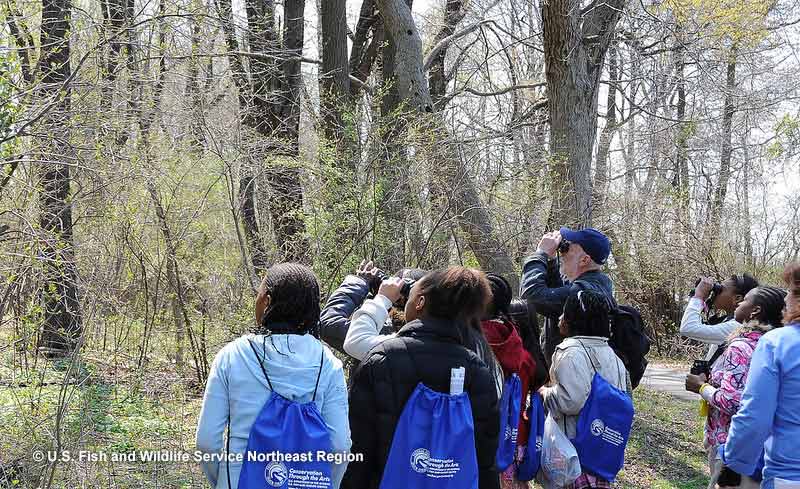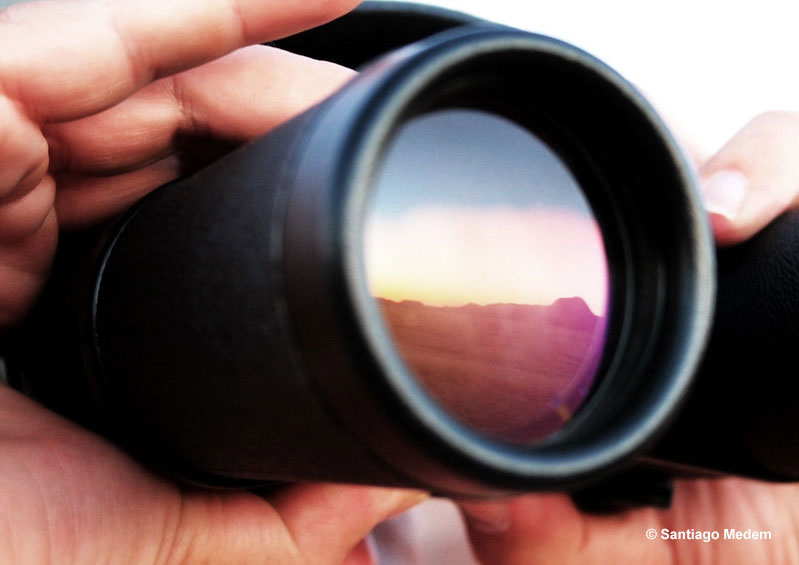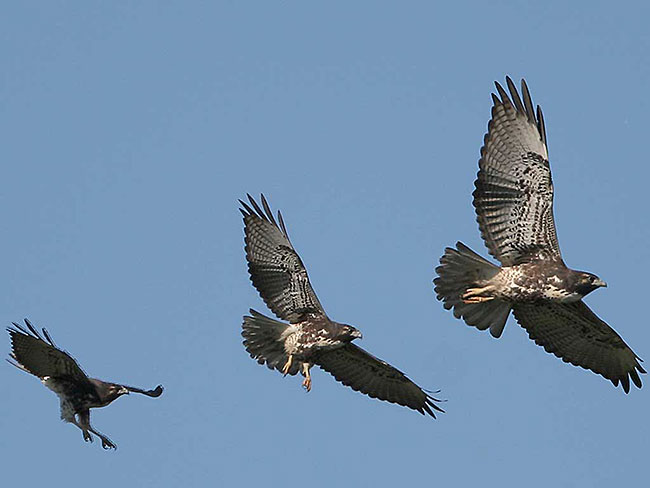
Bird watching is one of the easiest and fastest-growing hobbies! Birds are everywhere, more than you think, and most are pretty easy to watch.
You can even start bird watching in your own backyard! That’s where most of us started watching birds; where we saw our first goldfinches, beautiful jays, and stunning cardinals.
Bird watching is fun and easy, but what’s the best way to start watching birds? What gear do you need and where do you go?
See this article to learn about the basics of bird watching and other tips to start watching birds!
Key takeaways:
- Birding does not have to be complicated. Just go out and keep your eyes open!
- You don’t need much gear for birding – the only must-have piece of gear birders need is binoculars and maybe some field guides.
- Remember, always keep yourself safe! Don’t get too far from the trails and stay alert.
On this page
What Bird Watching Entails
Bird watching is easy because all you have to do is look at birds and enjoy them. As long as you are doing that, you are bird-watching!
If you have a big backyard with trees and other vegetation, there will be lots of birds to see. However, even folks who live in city apartments can still see birds. Look out the window and you’ll be surprised at the numbers and types of birds that fly overhead.
To identify and truly appreciate them, it’s best to get good binoculars and other essential gear mentioned below. At some point, to see a wider variety of birds, you’ll also need to venture further into the field.
The best places for seeing birds have lots of intact natural habitats like wildlife refuges, state parks, and nature preserves. Many also have visitor centers with bird lists and other helpful information.
Other good spots are lakes and rivers, even ones in urban areas. These habitats are fun because they have waterbirds and other species that are easy to watch. Local parks can also be great, especially in migration (make sure city parks are safe to visit!).
You can also go bird watching on your own or, for a fun learning experience, join a local birding club.
What Do You Need For Bird Watching
A proper pair of binoculars
No matter how good your eyesight is, binoculars are bird watching essentials. Basically, binoculars help us identify birds and appreciate them. Without optics, we just can’t see details about plumage, shape, and other features that reveal their true beauty.
Related: How to choose bird-watching binoculars
Bluebirds look pretty from a distance but look at that same bird through binoculars, and you might be at a loss for words! Instead of seeing a small blue and orange bird, binoculars help us view a glossy, pastel blue bird with burnt, pumpkin orange highlights.

As we become absorbed in that beautiful sight, we might also notice its long wings, longish legs, the shape of its beak, and other details.
Binoculars essentially bring us closer to birds, but which ones should we get? They range from expensive, high-end optics to small, cheap travel binoculars. If you don’t feel like spending as much, beginning birders will be fine with most weather-resistant binoculars that have coated optics.
See the best binoculars (for every budget)
Camera/phone
Although you can certainly watch birds without a camera, nowadays, most birders don’t venture into the field without one. Cameras are fun tools that challenge us to get good pictures and artistic captures of hummingbirds, high-flying hawks, and lots more.
They help us show the beauty of birds, the species we find, and we can even make calendars out of our bird photos. However, cameras can also act sort of like binoculars. If your camera has a strong zoom lens, it can help you see details on distant birds.
Even better, even if you don’t get a perfect shot, you can probably still use that photo to help identify the bird. Photos can be compared with illustrations in field guides, photos on bird identification apps, and we can share them on forums for identification.
Phones can also take great bird photos. Try an adaptor for binoculars or a scope for excellent shots!
Compact field guide
It’s fun to see birds but what about identifying them? Putting a name on a bird helps us keep track of what we see and is an essential part of the learning process.
Related: Birding podcasts – the easiest way to learn about birds!
To identify birds, we use field guides that show expected bird species. The best ones depict birds with accurate, detailed illustrations or photos, and explain how to identify them.

Identifying different species can be difficult, especially without a proper field guide.
A field guide should be small enough to carry while birding. It can still be an important reference book at home if it’s too cumbersome. Speaking of reference, there is plenty of bird identification information available online.
There are also excellent digital field guides available as apps. Some are digital versions of printed books, while others have photos and tools for identification. Since these apps are on your own, they are simple to use in the field.
Apps such as “Merlin” can also take your images and recordings and identify them!
A notebook
Cameras are great ways to document birds, but you don’t always get the picture you want. Sometimes, you don’t get a picture at all. However, just about anyone can make a rough sketch, we can always jot down notes about the birds we see.
For these reasons, before the digital camera age, a lot of birders used a small notebook or “field book.” It was essential for documenting rare birds, but birders also used them to write down all of the bird species they saw.
These days, most birders use eBird to make bird lists. However, some of the most experienced birdwatchers still make bird lists with their field notebook first. They do it because they can also easily write notes about the species they see and know that they’ll never need to charge that notebook.
Not to mention, writing in a field notebook also helps you learn more about the birds you see.
Birding apps
There are all sorts of apps for birding. Although you don’t really need them to watch birds, some can be really handy!
Bird identification apps such as Merlin are an excellent tool to learn about and identify birds. Although some birders still prefer to learn about birds from books, the filters and features on bird identification apps can be additional, important parts of the learning process.
The best apps also provide quick and accurate answers. Other apps help with making bird lists and can also show where birds have been seen. For bird watchers who want to learn bird songs, there are also good apps that do just that!
Related: Birding tours
For beginning birders, learning songs can be especially daunting. However, even if you don’t feel like studying the differences between warbler songs, it can still be fun to listen to them. Using apps to play bird vocalizations is relaxing and stimulates the brain.
A birding hat and other birding apparel
You don’t need a uniform to go birding. However, it might seem so when we see other, more experienced birdwatchers! We see a lot of lightweight outdoor apparel, and wide-brimmed, “adventurer” hats are common.
Those birdwatchers don’t need to go birding in any particular type of clothing. They just found that clothing engineered and designed for easy outdoor use works best, at least for them. Beginning birders may or may not like that type of clothing, but it’s not nearly as important as a good birding hat.
A hat helps by shading eyes from bright skies, and also helps protect your head and face from the sun. Both baseball caps and wide-brimmed hats work, although a wide-brimmed hat can also shade more of your head, including your neck.
In general, by shading your eyes, hats also make it easier to see birds.
Tips For Beginners
- Start by watching birds in your backyard. It’s a great and easy way to learn about common birds. A lot more species can also occur in backyards than we think!
- Get a bird feeder and a bird bath. Install these items in the backyard to attract birds for nice, close views!
- Take part in local birding club excursions and free bird walks. This is the perfect way to meet other birders, learn about the best birding locations, and learn how to watch and identify more birds.
- Don’t feel like you have to get the best binoculars or camera. Sure, those will be nice, but you can start birding with more moderately-priced gear and still see lots of birds!
- Practice using your binoculars, a lot! Binoculars can be tricky, especially focusing in on a bird. Watch as many backyard birds as you can, and you’ll get the hang of it.
- Study field guides in your spare time. Although they are also meant to be used while birding, they will be easier to identify if you study birds in advance.
- Learn about birding sites from other birders and also by checking eBird to see where people watch birds.
- Consider longer trips to wildlife refuges and even birding conferences. There are a lot of incredible birds to see, and don’t worry about being a beginner. You won’t be the only one, and other birders will be happy to be of help!
- Look into quality, online birding resources that have information about birds as well as their conservation.
- Just go birding. It really doesn’t matter where you look. Whether in the backyard or elsewhere, you’ll see birds!
Frequently Asked Questions
What is the most essential thing required for bird watching?
The most essential thing required for bird watching is wanting to see birds. Beyond that, binoculars will help you view and better appreciate them.
What is the best time for bird watching?
The best time for bird watching is the morning, especially the first two or three hours of light. The late afternoon can also be good.
What should be in your birding bag?
In your birding bag, you should have optics and camera gear as well as plenty of tasty snacks, a water bottle, field guide, notebook, bug repellent, sunglasses, and hand sanitizer.
Read next: Birds every beginner should know

